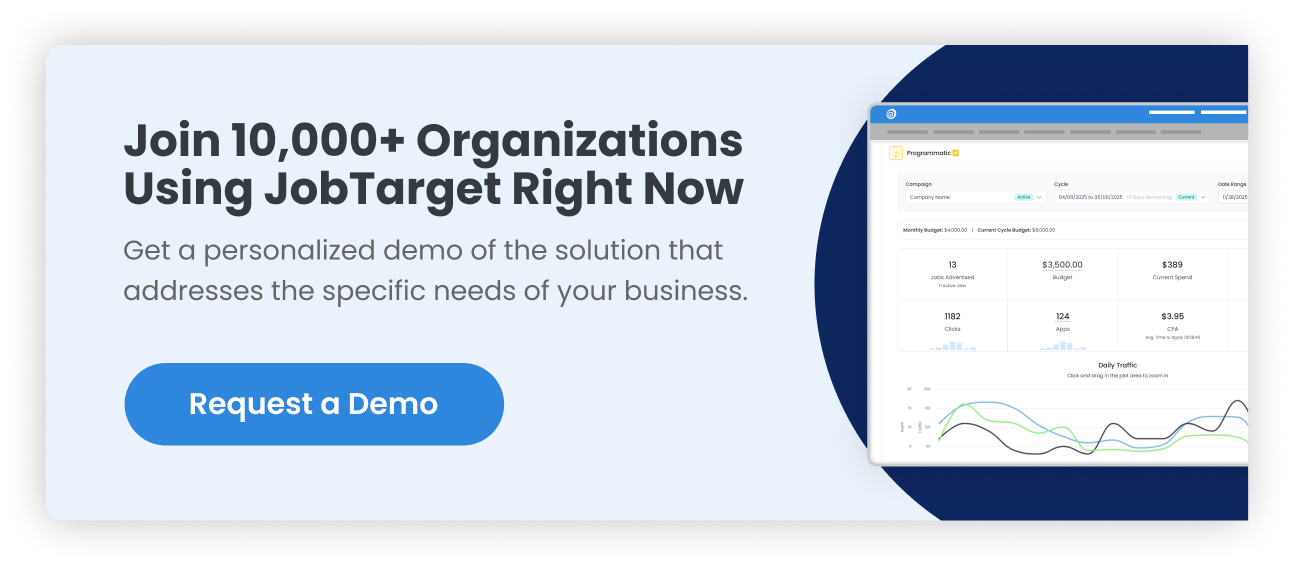Every part of a job description provides an opportunity to clearly communicate with job seekers and align an organization’s hiring goals. It may seem like crafting a good job description is a no-brainer in your recruiting process, but a bad job description can discourage skilled candidates away from your open roles and take you longer to find the right talent – costing you in recruiting expenses. Here, we provide the anatomy of crafting an ideal job description.
Job Title
When it comes to touchpoints for attracting talent, your job title is the first one seen by job seekers. According to a 2020 survey by Indeed, 36% of job seekers that use job sites search for a job using the title of the job they’re looking for.
The importance of the job title is critical, so you want to be clear, descriptive, and engaging. Use 3-5 words in your title that are industry standard and stay away from any company jargon. The title should indicate the level of the position if applicable and describe the responsibilities of the job seeker. For example, the title Senior Product Developer shows that the function of the role is to develop products or apps with previous years of experience performing the duties and responsibilities of a product developer.
Quick Tips
As you develop your job description keep in mind that it should have:
-
Clearly written and short sentences
-
Five to ten bullet points featuring employee requirements
-
An outline of how employee contributions will affect the company
-
An Affirmative action plan/equal employment opportunity (AAP/EEO) statement
-
Your location and mention if the position is remote, hybrid or on-location
-
A mobile-friendly design with a way to easily apply for the role
Tone and Structure
Your job descriptions should represent the personality, values, and insight into the culture of your organization. The tone should be brand-friendly and provide professional messaging that lets candidates know why your organization is unique and why they should apply for your roles.
Responsibilities
Listing the duties and responsibilities of an employee in your job descriptions provides accountability and doesn’t leave room for any misinterpretation from both employer and employee. It can measure the success of new employees and ensure certain goals are met. You should list the responsibilities in order from most important to least.
Qualifications
Here is where you indicate the certifications and experience that you’re looking for in a job seeker. Depending on your industry, some job qualifications may only require education or years of experience while others may require something more specific such as an advanced certificate in nursing. You can also list soft skills which are more interpersonal attributes or hard skills which list more technical ones. Overall, a candidate may not have every skill you’re looking for, but they may check off most of the list. It will be up to you to determine which ones are most important.
Benefits and Perks
A valuable asset to have in your recruiting arsenal is a list of job benefits. If applicable, you should provide a compensation range and general benefits including time off, insurance, and 401K. the benefits section of your job description is a great place to mention bonuses and employee discounts or add more dimension to your organization’s culture and any fun perks such as bringing your dog to the office.
Short summary or link to your organization
Adding information about your organization is ideal for a candidate to easily find out whether they may be a good fit with your culture. Provide a link to your About Us or career page, or even add a video to help talent get a well-rounded look into who they will be working for.
Call To Action
Always have a call to action for your job description that stands out and is easily accessible. By adding an easy application button for job seekers, they can easily submit their resumes to you. And make sure your application isn’t too long when filling out.
Best Practices
Crafting a well-written job description is essential for attracting talent. It’s an opportunity to clearly demonstrate culture, values, and responsibilities. Additionally, you can mention projects a candidate will work on, the team members involved, and what a day in the life of an employee looks like. If you keep your descriptions clear and short, telling a candidate what they need to know without adding any fluff, you’ll be set up for hiring success.


.png)





